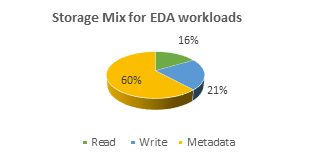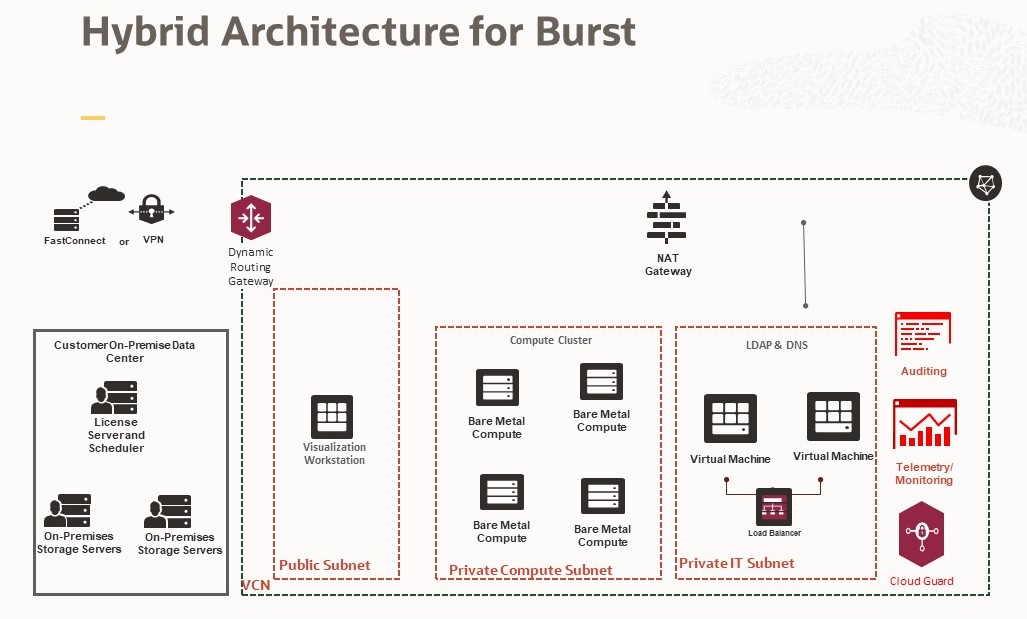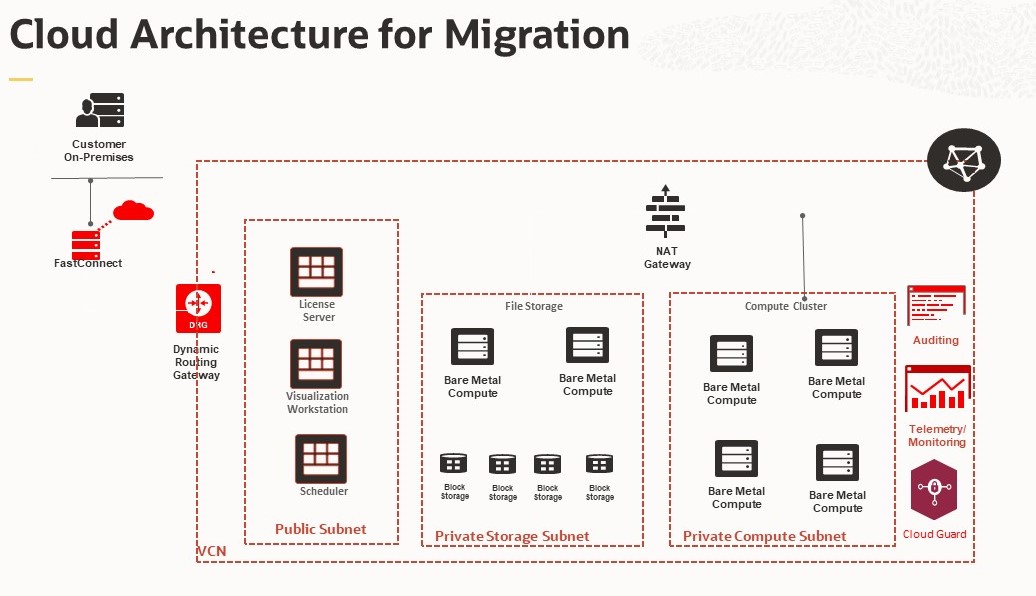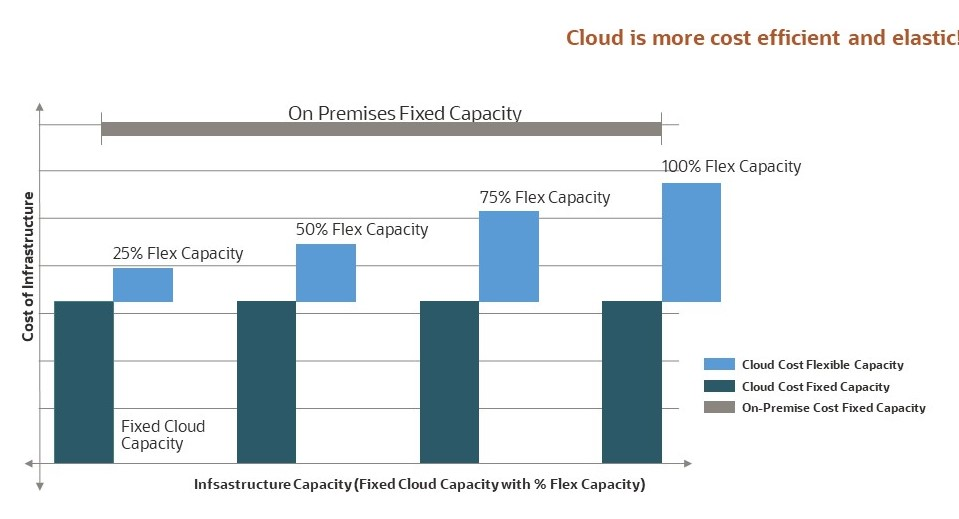With the significant increase in demand for low-power, high-performance silicon-integrated circuits, time-to-market is crucial. Semiconductor chips are becoming more complex with more compute and smaller footprint. Infrastructure limitations become the tailback during tape-out.
Migrate or extend electronic design automation workloads to Oracle Cloud Infrastructure
Silicon design is a highly iterative engineering process. In the design flow, the chip goes through numerous rounds of verification and validation during the frontend and backend design phases.

Electronic Design Automation (EDA) workloads require massive amounts of compute, storage, and networking with storage becoming the bottleneck. Reducing storage-related slowdowns by linearly scaling storage performance through frontend and backend design phases becomes critical. Fast metadata storage is a prerequisite for multiple design phases. The following figure indicates the average storage usage during both phases of design.

Oracle Cloud Infrastructure (OCI), with leading-edge infrastructure and advanced security features, provides an easy to adopt solution for EDA workloads.
-
Upgraded infrastructure: The true bare metal server offering provides complete control to achieve and sustain millions of transactions per Compute instance. Latest Intel, AMD, and ARM processors provide more compute power.
-
Storage: OCI high-performance computing (HPC) file system performance with fast block storage scales linearly. Attached NVMe SSD drives deliver performance for storing large amounts of metadata without any extra charge or tiers.
-
Fast network: High-bandwidth clustered network connects servers to high-performance file, block, and object storage. OCI’s non-over-subscribed core network provides predictable performance. No egress charges with FastConnect aid high data transfer between on-premises and cloud.
-
Flexibility and scalability: Scale resources on-demand to support burst peak requirements. Per-second billing optimizes costs by charging for only what you use.
-
High availability and reliability: OCI is in 29 regions worldwide and expanding rapidly. Each region has one or more isolated data centers (availability domains). Each availability domain has three logically isolated fault domains.
-
Security: Off-box virtualization with networking and IO outside the server provides maximum isolation and protection. Users don’t have visibility to the control plane providing immunity to hacks.
Technical considerations
The main use cases for cloud resources include burst, with extension to supplement on-premises, and migration, where the workflow is transferred, stored, and run on OCI and synced back to the customer data center. Cloud migration allows maximum benefit by unburdening the existing on-premises infrastructure for other uses.
For burst, on-premises architecture and environment are replicated in the cloud. For migration, the architecture is optimized based on the application being run with the environment and infrastructure.
Common architectures

Hybrid architecture includes the following features. The proximity of the customer on-premises data center to the OCI data center is key for a performance advantage.
-
Application data resides in on-premises storage systems and uses OCI resources for compute
-
Encrypted FastConnect creates a dedicated private connection between on-premises data center and OCI data center
-
Bare metal and virtual machine (VM) instances or flexible SKUs offering choice of memory and number of cores chosen for optimal performance

Cloud architecture includes the following features:
-
Application data resides in the cloud file storage systems
-
Bare metal and VM instances or flexible SKUs of compute cores chosen for optimal performance
-
Scheduler master and license servers reside in the cloud subnet on a VM
-
NFS V3 file servers created using bare metal servers or dense IO servers for high performant IO for both scratch and non-scratch storage
-
Optional high performant block volume can be attached to the file servers to extend storage capacity
Benefits of OCI for EDA design
Purpose-built bare-metal servers and high-performant scalable local storage with low-latency network enable enterprises to run simulations faster. Fewer jobs in the queue translates to higher return on investment for software licenses, on-time tape outs, and quicker time-to-market. EDA customers are requiring up to five times more compute power on 5 nm nodes versus the previous generation of transistor technology. OCI offers cloud as an extension of the on-premises data center with same environment and software tools, providing the increased capacity demand that on-premises data centers can’t cater to.

The previous chart shows how OCI offers infrastructure capacity without any upfront capex costs and at lower opex cost. With baseline cloud capacity, OCI manages the unpredictable peak requirements typical during tape-outs. OCI gives customers agility to add new capabilities, streamlined infrastructure management, and lower total cost of ownership (TCO). OCI has same pricing worldwide and no-lock in price for reserved instances. Universal cloud credits and flexible annual commitments are easy solutions for on-demand ready to deploy infrastructure on OCI.
Ready to get started?
Let us help you solve your capacity problems for running your EDA workloads. Try Oracle Cloud Infrastructure for free. Get more information on Oracle Cloud Free Tier or 30-day free trial, which includes US $300 in credit to get you started with a range of services, including compute, storage, and networking.